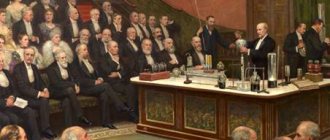Goals: - to continue acquaintance of students with Arabs and their culture;
— find out what contribution the peoples of the Arab Caliphate made to the development of world culture;
— show the role of Islam in the development of culture in the countries of the Arab Caliphate
- will continue to develop the ability to analyze, compare, generalize, and draw conclusions.
Equipment: computer, presentation, materials for checking homework
During the classes.
1. Org. start of the lesson.
2. Checking homework.
Historical dictation.
1. The temple, located in Mecca, is an ancient sanctuary. (Kaaba)
2. Annual and seasonal auctions (fairs)
3. Nomadic Arabs, “steppe people”, moving across the steppes with their herds (Bedouins)
4. The largest city on the way from Byzantium to Africa and India (Mecca)
5. The year of migration, considered the date of the Muslim calendar (Hijri)
6. Founder of Islam (Muhammad)
7. Rules of conduct (Sharia)
8. Ruler of the Arab world (caliph)
9. The Holy Book of Muslims (Koran)
10. Religion of Muslims (Islam)
11. Viceroy of the Caliph, appointed to govern the provinces (emir)
12. “City of the Prophet” (Medina)
3. Communicating the topic and objectives of the lesson:
(sl. 2) Lesson plan:
Education. The science. Literature. Art. The meaning of the culture of the caliphate.
4. Studying new material.
1) teacher's story:
(sl. 3) The caliphate included many countries with high ancient culture: Egypt, Syria, Palestine, Mesopotamia, Iran, Central Asia. Islam spread widely in these countries, and with it the Arabic language. It was called the “Latin of the East.” But unlike the Latin language, Arabic was alive, it was spoken by a huge number of people.
(sl. 4) Every Muslim, if he wanted to occupy any position, had to get an education. Muslim primary schools were private. Those who could pay studied at home with hired teachers. Education could be continued by attending lectures and conversations with experts in the Koran, Sunnah and Sharia. Higher Muslim schools - madrasahs - were opened at the most famous mosques in big cities.
(Sk. 5) Let's write down the terms
Sunnah is a collection of stories about the sayings and actions of Muhammad.
Mosque – Muslim temple Madrasah – Muslim school
(sl. 6)
- Every noble person wanted to have in his circle as many outstanding poets, scientists, Koran experts, who most often lived in the palaces of caliphs and emirs, received allowances and gifts from their patrons, glorified them for this, and dedicated their works to them.
(sl. 7)
— Arab scientists had the following saying: “The most important adornment of a person is knowledge.” How do you understand such words?
- In the 8th-9th centuries, the scientific works of ancient Greek, Iranian, and Indian scientists were translated into Arabic. - Especially many translations were made under Harun ar-Rashid and his son. The House of Wisdom was then founded in Baghdad, a repository of manuscripts where books were translated and copied. Scientists lived there, they received books, housing, and money.
( words. Arab mathematicians knew the works of Pythagoras, Euclid and Archimedes, Indian astronomers and mathematicians. They created algebra and began to use Indian numbers. Gradually, these numbers began to be called Arabic, and their calculation penetrated into Europe
Arab mathematicians knew the works of Pythagoras, Euclid and Archimedes, Indian astronomers and mathematicians. They created algebra and began to use Indian numbers. Gradually, these numbers began to be called Arabic, and their calculation penetrated into Europe
(sn. 9) Observatories operated in Baghdad and Damascus. Using sophisticated instruments, astronomers were able to approximately calculate the circumference of the Earth and describe the position of visible stars in the sky.
(pages 10-11) A great scientist from Khorezm, the author of numerous works on history, geography, philology, astronomy, mathematics, geodesy, mineralogy, pharmacology, geology, etc. Biruni mastered almost all the sciences of his time. He expressed a brilliant guess that the center of our Universe is the Sun, and the Earth moves around it.
(sl. 12)
— Guys, but not only the above-mentioned sciences have become widespread in the Arab world. Written history was born among the Arabs along with Islam. Legends and messages appeared about Muhammad, his biography, and information about how Islam arose. Historians glorified the conquests of the Arabs and summarized the history of Roman, Byzantine and Iranian rulers
(sl. 13)
— Do you have any idea what science was held in high esteem by the Arabs?
— It was geography. The proverb speaks about this: “Whoever sets out on a journey for the sake of science, the doors of heaven open to him.” Geographers not only studied reports about other countries, but also sought to visit them, making long journeys at the risk of their lives. Arab travelers and merchants described the countries of the caliphate, India, China, and penetrated far into Africa and Eastern Europe. They compiled maps of the countries and seas known to them.
(sl. 14 - 15)
— Medicine developed successfully. The great scientist Ibn Sina (980-1037) lived in Central Asia; in Europe he was called Avicenna. He was a very versatile thinker - philosopher, astronomer, geographer, physician, poet. He owns more than a hundred scientific works. Ibn Sina became especially famous as a doctor. In his famous work on medicine, he described the signs of many diseases that before him they could not distinguish.
(sl. 16-17)
— Along with goods, merchants and camel drivers brought wonderful tales from other countries. They were told in the palaces of the caliph and the nobility, in the bazaars, streets and houses of Baghdad. Many listeners loved stories about amazing travels and adventures. Ordinary people told funny stories about cunning people who cleverly deceived judges and officials. From these tales, the world-famous collection “A Thousand and One Nights” was later compiled, which absorbed the traditions and legends of many peoples.
(sl. 18)
— Even before Islam, the Arabs developed rich poetry that reflected the life and customs of nomads. Each tribe had its own recognized poet who performed at the festivals. Pre-Islamic poets sang of the brave warrior, generous and true to his word
(sl. 19) Acquaintance with the culture of the conquered peoples changed the interests and tastes of the Arabs. Poets were now interested in “eternal” questions: about good and evil, about life and death, about wealth and poverty, about love and betrayal, about the beauty of the world and its sorrows.
(page 20) One of the most famous poets was Ferdowsi (934-1020). For more than 30 years he worked on the poem “Shahnameh” (“Book of Kings”). It tells about the struggle of the Iranian people against the conquerors, glorifying the exploits of legendary heroes.
(page 21) Of all the arts, architecture was most developed in the caliphate. Builders erected magnificent palaces, tombs and fortresses for the caliphs. The whole world knows the Alhambra, the emir's palace in the Spanish city of Granada. (page 22) - view of the palace
(page 23) Mosques were built in cities. The mosque served not only as a place of prayer, but also as a courtroom, a repository for books, as well as money collected for the poor, and simply a club where one could talk with friends
(page 24) The main building of the mosque is a quadrangular prayer hall, open to the courtyard, which was usually surrounded by a gallery with columns, where those gathered rested; in the middle of the courtyard, believers performed ablutions by a pool of running water. Sometimes a dome was erected over the mosque, but more often the roof was flat. Many columns, graceful and light, filled the prayer hall.
(page 25) Compared to a Christian church, the decoration of the mosque is the simplest: there is no furniture, no expensive utensils, no musical instruments. The floor is covered with carpets, on which visitors are seated, having previously left their shoes behind the doors; the walls are painted with sayings from the Koran.
(page 26) One or more minarets were erected near the mosque - high towers, from which special ministers called believers to prayer five times a day.
(sn. 27) Arab buildings were richly decorated with stone carvings, tiles, mosaics on the walls and floors. The walls of the buildings were covered with arabesques - complex geometric patterns of intersecting and intertwining lines. The depiction of people and animals is prohibited by Islam.
2) independent work
Page 89-90 – read and answer the question “What is the significance of the culture of the caliphate?”
1) Europeans received a lot of valuable scientific knowledge from the Arabs.
2) The works of Arab mathematicians, doctors and astronomers served as a guide for scientists in medieval Europe.
3) From the Arabs, Europeans received not only numbers and a new counting system, but also knowledge of astronomy, including the names of many stars.
4) From the Arabs they learned to draw more advanced maps, and later to use a compass and globe.
5) Avicenna’s work on medicine, translated into Latin, was a reference book for European doctors until the 17th century.
6) Muslim art influenced the features of architecture, many fashions and customs of Spain and Southern Italy, and many African countries. Europeans became acquainted with the culture of the countries of the caliphate mainly through Spain conquered by the Arabs. There were many high schools in Cordoba, where prominent scientists gave lectures.
7) Ancient manuscripts were kept in huge libraries here. Many works of ancient Greek scientists and writers, as well as thinkers from the countries of the caliphate, became known in Europe thanks to the Arabs.
5. Summing up the lesson.
6. Homework:
Paragraph 10, notes, question 7 - in writing
| Views: 2507 | Downloads: 463 | Author: Antonenkova A.V. Tags: Caliphate Subject: History |
Related educational materials:
- Multimedia test for the history lesson “Arab - Muslim world”
- Abstract and presentation for the history lesson “The Emergence of Islam. The Arab Caliphate and its collapse"
Literature and poetry
At the initial stage, the culture of the countries of the Caliphate was characterized by a concentration on religious subjects and the desire to supplant regional languages with Arabic. But later there was a liberalization of many spheres of public life. This in particular led to the revival of Persian literature.
The poetry of that period is of greatest interest. Poems are found in almost every Persian book. Even if it is a work on philosophy, astronomy or mathematics. For example, almost half of the text of Avicenna’s book on medicine is written in poetry. Panegyrics became widespread. Epic poetry also developed. The pinnacle of this trend is the poem “Shahnameh”.
The famous tales of the Arabian Nights are also of Persian origin. But for the first time they were collected in one book and written down in Arabic in the 13th century in Baghdad.





